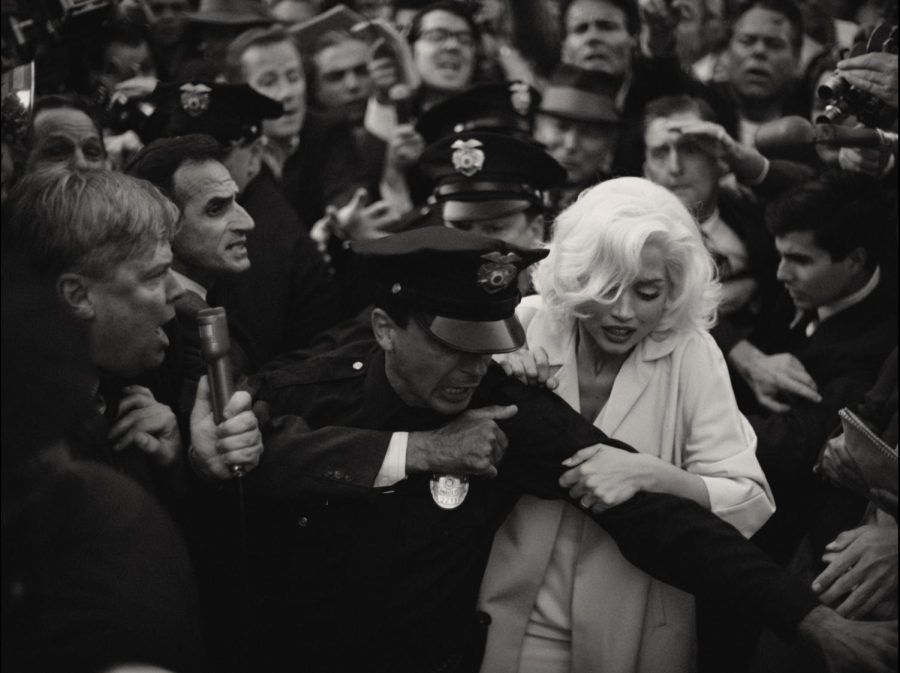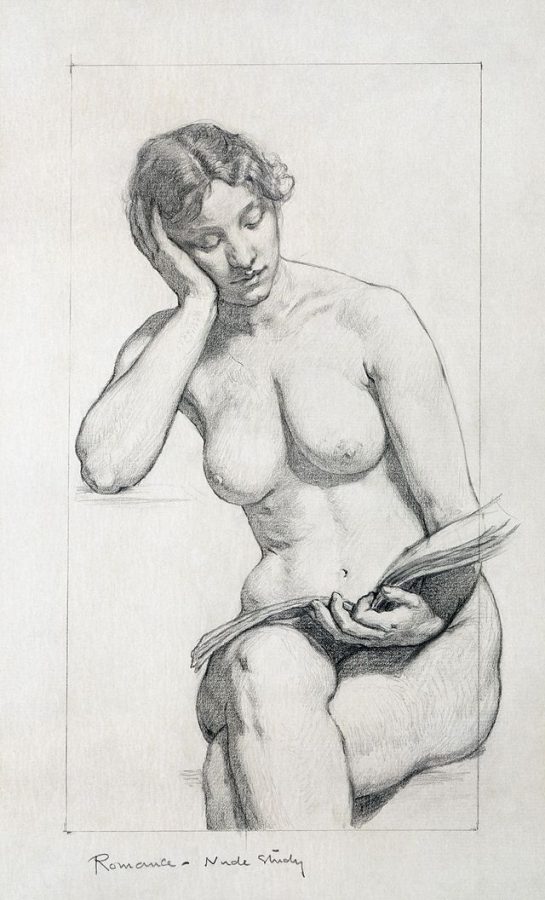Andrew Dominik’s “Blonde” opens with the pop of flashbulbs. A sea of cameras captures the iconic image of Marilyn Monroe in “The Seven Year Itch,” coyly holding down her dress as it billows up from under her. But this isn’t Marilyn. It’s a near-perfect recreation of the image, featuring Ana de Armas looking eerily like the real deal, even as the camera circles around her in slow motion. “Blonde” is a movie filled with similar recreations, punctuating the various stages of Monroe’s life, from her early commercial modeling to later marriages to Joe DiMaggio and Arthur Miller. And that’s where the verisimilitude ends.
“Blonde” is not a biopic. Australian writer-director Andrew Dominik has made it abundantly clear he had no interest in making an honest-to-god recounting of Marilyn Monroe’s life. It’s instead based on Joyce Carol Oates’ 2000 novel of the same name, tying the public landmarks of her life together with fictionalized events and insights. It follows her from early childhood, defined by an unstable, abusive mother, to her eventual suicide in 1962, motivated by severe loneliness and a barbiturate addiction.
Despite the film’s nearly three-hour runtime, very little about Marilyn’s personality is revealed. At every turn, Dominik selects the moments where she is at her most powerless. We see, often in graphic detail, rituals of abuse laid upon her. Whether it’s at the hand of her mother, her husbands or members of the Hollywood oligarchy, Marilyn always ends up the victim. She endures physical abuse, emotional manipulation and multiple sexual assaults, and we are held captive to watch. This is a gruesome viewing experience.
The story of the beautiful young starlet cut down in her prime is ever-present in our culture. From Marilyn to Princess Diana to Amy Winehouse, it seems every generation has their version of that glitzy tragedy. In the wake of these tragic deaths, we’re briefly forced to reckon with the corrupting influence of fame, and then swiftly move on with our own lives. In each case, people respond to the event with their own codes of ethics, considering their own experiences. The victims lose their initial identity and become symbols of corruption.
Dominik is very conscious of Marilyn’s status as a symbol. In prioritizing imagery and glamorous ephemera, he shows how supernatural she’s become in the public consciousness. There’s something undeniably powerful about framing her as a piece of commodifiable iconography rather than history.
That’s a bold philosophy to base an entire film around. But when your subject is a seriously gifted actress and politically active public figure, the product can’t help but feel reductive. The real Monroe (or Norma Jeane Mortenson, as she was born) was was not afraid to voice her support for the Civil Rights Movement or Castro’s leadership in Cuba. Andrew Dominik has made a film not about Marilyn Monroe, not even about Norma Jeane, but about abuse. And even within those parameters, the story is not exactly comprehensive.
Many successful films have been made about the cycle of abuse and its long-term effects on adult psychology. Lynne Ramsay’s 2017 film “You Were Never Really Here” illustrates in gruff detail the many ways abuse in our childhoods can affect the way we see others. “Blonde” takes a much simpler, almost Freudian approach to these connections.
One scene shows a young Marilyn talking to an imagined version of her absent father, and in nearly every subsequent scene she calls her romantic and sexual partners “daddy.” It really is that simple here. After becoming pregnant, she begins to fear that she would be as bad a mother as her own, and engages in bizarre, manipulative conversations with her unborn fetus. Moments like these feel cartoonish in their simplicity and end up recycling oversimplified notions of the abused psyche. If Dominik has no interest in telling us about Marilyn, you would hope that he has something interesting to say about abuse, but that never materializes here.
As simplistic as the script is, “Blonde” has two major benefits working for it. The first is Ana de Armas, who brings an incredible depth to an underwritten character. In addition to looking extremely similar to the real Marilyn, she conveys so much experience through her eyes that it becomes easy to lose sight of de Armas entirely. She consistently sells the content of the film, even when that content is questionable.
The second major asset is its cinematography by Chayse Irvin. This is a genuine achievement in visual stylization. The cinematography ranges from black-and-white imagery in a boxy aspect ratio to widescreen Technicolor splendor. Often slipping into more abstract construction, the film gains a strange allure with its imagery, feeling both clinical and dreamlike. There are many breathtaking moments throughout, making even the more fraught content fascinating to watch.
Since its premiere at the Venice International Film Festival this September, “Blonde” has been stirring up controversy, whether that be for the treatment of its often-debated subject or its approach to hot-button issues like abortion and domestic violence. It’s hard to say where the film’s reputation will land in a few years, but it’s more than likely that Netflix, who distributed the film, will be hesitant to take another risk of this size any time soon. Bad press hangs around “Blonde” like a noxious cloud, and Netflix is bearing the brunt of that ill will. As simplistic and ill-conceived as “Blonde” is, it would be extremely interesting to see another film at this level of ambition get made. Let’s just hope that that film invests a little more thought into its content.
Thomas Machacz can be reached at [email protected].




















Dr. Ed • Oct 4, 2022 at 4:13 pm
ALLEGED suicide…
It’s equally likely it was an overdose — barbiturates we’re the fentanyl of that era, so dangerous that they are no longer sold.
She was sleeping with both JFK & RFK and many think she was murdered to keep her quiet.
Calling it a “suicide” was simpler, but who knows….